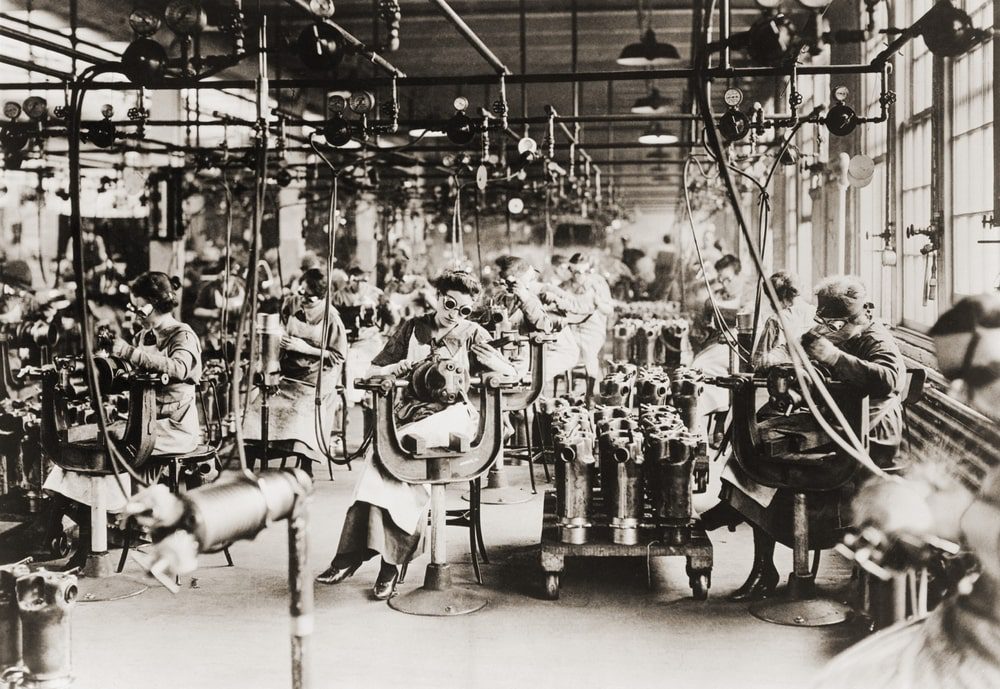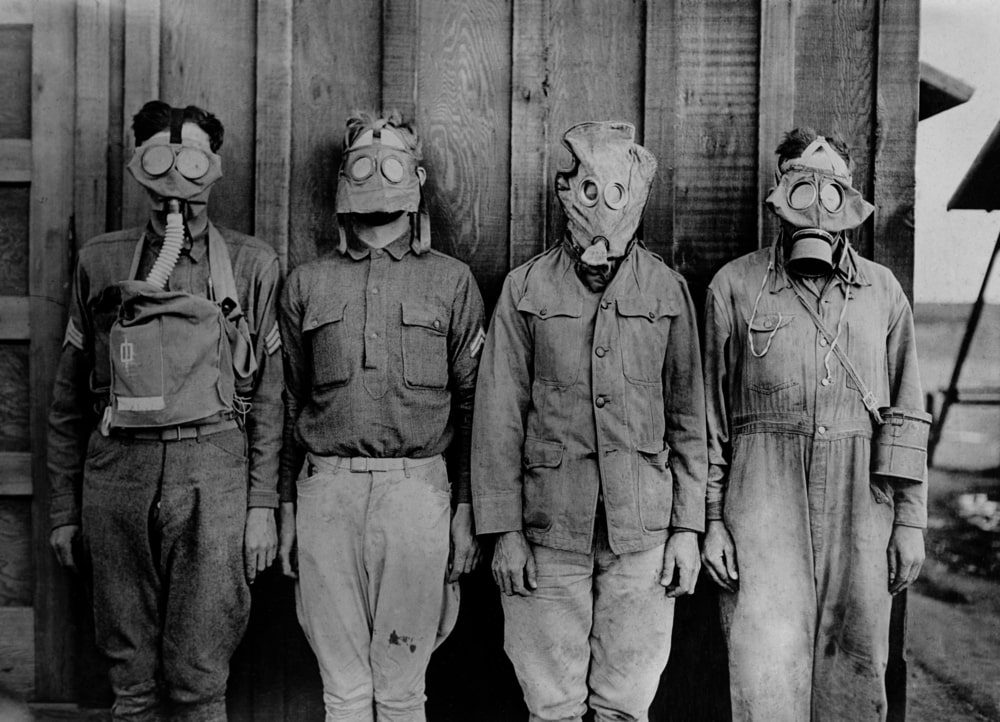These are some facts about WWI we need to remember:
WWI—when we say that, it seems so far away. And it actually is. I mean, WWI happened more than 100 years ago, and even if we will never forget it, mostly because we were taught in school about it, there are still some interesting facts about WWI that not many folks know about.
But that’s why I’m here, right? If you read my articles here on Historical Files, you already know that I enjoy writing both about WWII and controversial figures in history. Today is no exception because I will tackle some of the most interesting facts, which are less known worldwide.
Sit comfortably, because it will take a while. And by the end of the article, if you’re not bored, let’s discuss in the comments section. I love hearing from you! Without further ado, let’s start the list of amazing facts about WWI we must share with our children and grandchildren as well:

-
During WWI, around 700,000 women entered the workforce
The majority of women worked as domestic servants or stayed at home, taking care of children, before the war. However, the situation changed drastically after the war started because more and more women joined the workforce, even if the jobs were initially destined for men only.
All of a sudden, women were working in factories, offices, or even as bus drivers. And when you come to think of it, all these jobs were considered “taboo” during peacetime. How times change, right?
Some women took the “dangerous” path by choosing to work in factories, and those who handled TNT experienced problems with their skin turning yellow as a result. We refer to this condition as toxic jaundice. On a funnier note, these women were also called “canaries.”
-
Prosthetics had significant improvements
While I did my research about all the facts about WWI, I have to admit this one made me smile a bit. The word “war” is always associated with bad things because of the tragic events that happened during it, and we often tend to forget that among these unfortunate events also good things happened.
Throughout the battle, a large number of soldiers suffered serious injuries or lost limbs. Naturally, doctors of that era had to try their hardest to make patients feel as human as possible. Significant progress was made in the creation of prosthetic limbs and plastic surgery for soldiers who were hardly recognizable after their time on the battlefield.
However, since plastic surgery wasn’t as we know it nowadays, artists were asked to make copper masks to cover up wounds. The masks were painted to match the skin tone of each soldier and secured with eyeglasses. Some even had metal lashes that were curled.
-
The invention of the motorized ambulance
Another thing that was amazing for the WWI period was the invention of the motorized ambulance. With so many injured soldiers it was impossible to transport them in time to the nearest hospital so it was mandatory to come up with a solution.
The interesting thing is that a lot of people volunteered to drive the vehicles, including women and the widely known Walt Disney! I think it’s great to stumble upon these facts about WWI and smile while thinking about how great humans are when others are in need! Something we don’t see that much of nowadays, unfortunately…
-
African Americans and Native Americans were on the battlefield
For a lot of people, this may come as a surprise. That’s why I wanted to include it in the list of facts about WWI. Given the fact that they didn’t get American citizenship until 1924, around 13,000 Native Americans got involved in the war.
Although more than 200,000 African Americans served, only 11% of them did so in combat—and even then, in segregated units.
-
Romania lost a lot of its treasure during World War I because Russia never gave it back
Romania, that tiny country on the European map, is kind of hard to miss, right? However, despite its size compared to other countries, Romania had a vast collection of treasures. Romania moved its enormous treasure trove to Russia for protection during World War I.
The wealth was not returned by the newly established Soviet government, which severed diplomatic relations in 1918. Russia still has the treasure, which is estimated to be worth over $1.5 billion, and it has no plans to return it.
Curious about other insights and facts about WWI? The recommended book for history enthusiasts is The First World War: A Complete History, which is a formidable addition to any collection. I have it too! Back then when I bought it was a bit pricey, now if you are lucky you will get your copy for just $17.79 for the paperback edition.

-
Before the war, gas masks weren’t invented
During World War I, Dr. Cluny Macpherson, the Principal Medical Officer of the 1st Newfoundland Regiment, created the gas mask. Previously, a rag, usually an old sock, drenched in their urine served as the troops’ main defense against chemical assaults. Desperate times call for desperate measures!
-
Tanks were first used at the Battle of the Somme
When mentioning facts about WWI, it’s mandatory to talk about the industry of tanks too. The Fosters of Lincoln Society, which is composed of engineers and makers of agricultural equipment, was given the contract in 1915 to produce the tank, a new type of armament.
Just 49 tanks were used on the Somme on September 15, 1916, marking the weapon’s initial combat deployment. However, approximately 400 tanks were used at the Battle of Cambrai in November 1917, marking the first meaningful employment of tanks in combat. During World War I, Britain produced more than 3,000 tanks.
-
Safety helmets weren’t a thing before the war
And how were the heads of the soldiers protected? Well, when WWI started, British soldiers were lucky to have cloth caps for protection. Of course, you may wonder how in the world a piece of cloth can protect somebody from bombs or other dangers, but it is better than nothing.
They were initially introduced in 1915 by the French. In 1916, when he was serving on the front lines, future Prime Minister Winston Churchill donned a French one.
-
Dogs were messengers
Dogs were employed as messengers during World War I, carrying orders in capsules strapped to their bodies to the front lines. Telegraph wires were also laid down by dogs.
-
Soldiers lived in trenches
It’s obvious that during wartime, the living conditions for every soldier on the battlefield were very harsh. They lived in trenches; they had to dig in the ground. Because of that, soldiers got sick, and many of them couldn’t fight anymore.
The initial strategy was good because the idea was to make advances on the opposition, but nobody thought that soldiers might get sick. Sleeping, eating, and fighting all in the same place. Sheesh! I get shivers down my spine just thinking about this.
That’s it! These were the least known facts about WWI and I hope you enjoyed the lecture! If you did and would like to spend a little bit more on our page, you may also be interested in reading about The Great Depression: 8 Interesting Things About Life During This Time.






One Response
When World War two started I saved everything that was critical.